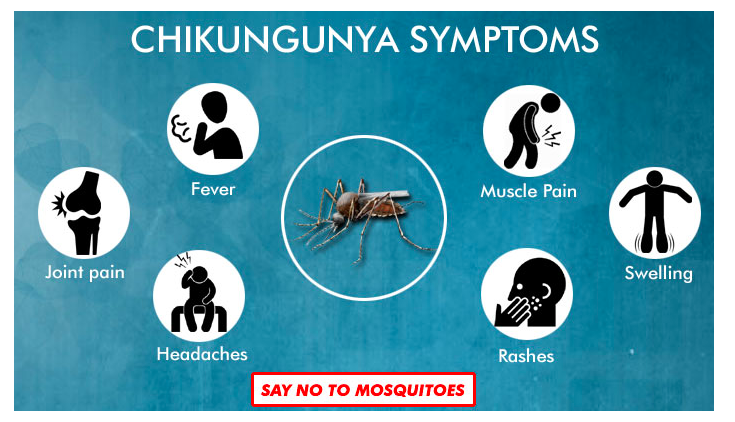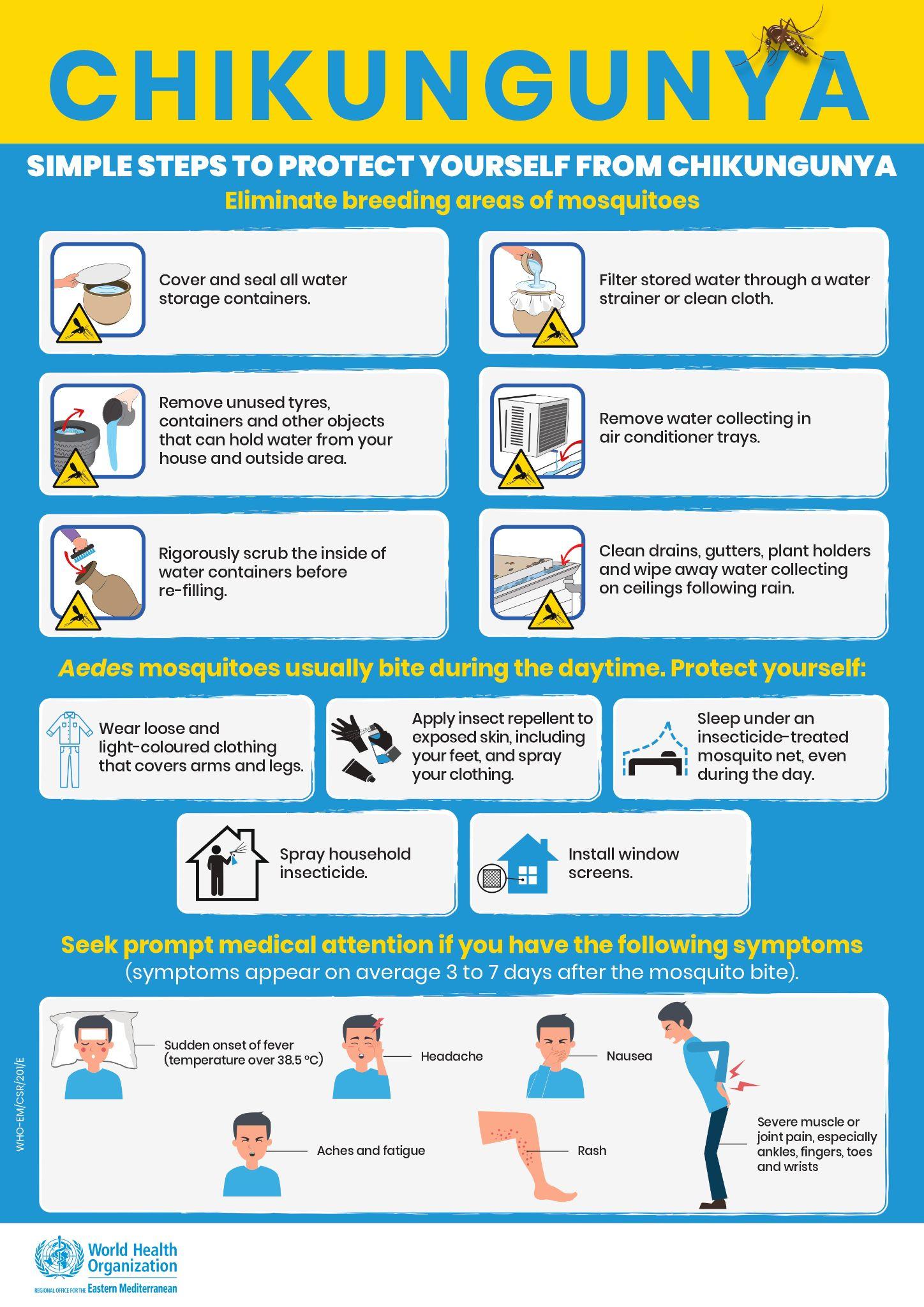
Chikungunya: Symptoms, Causes, Complications, Treatment and Prevention
What is it:
Chikungunya is primarily caused by a virus transmitted when an infected female mosquito, commonly known as the 'yellow fever mosquito' (Aedes aegypti), bites a human. While Chikungunya is typically not considered contagious, there are rare instances where transmission can occur through contact with an infected person's blood. If left untreated, it can lead to prolonged and severe symptoms that significantly affect a person's quality of life.
Symptoms of Chikungunya:
The incubation period for the chikungunya virus typically ranges from 2 to 6 days, with symptoms often manifesting between four to seven days post-infection. These symptoms may include:
- Sudden high fever (up to 40 degrees Celsius or 104 degrees Fahrenheit) that usually lasts for about two days
- Severe joint pain can last weeks or months and often affects multiple joints.
- Rashes may appear on the arms, legs or upper body.
- Non-specific viral symptoms include headache, muscle pain, joint swelling, fatigue and nausea.

How to diagnose Chikungunya:
Many of the symptoms of chikungunya are similar to malaria and dengue. They are diagnosed by elimination. Diagnosing chikungunya involves a combination of clinical evaluation, medical history and laboratory tests such as:
- Blood tests to detect antibodies produced by the immune system in response to chikungunya virus infection, and
- Polymerase chain reaction (PCR) tests to directly detect the genetic material of the chikungunya virus in blood samples.
How to treat Chikungunya:
There is no specific antiviral treatment or vaccine available for Chikungunya virus infection. Treatment is generally focused on managing symptoms and providing support with the following steps:
- Rest: Get plenty of rest to help your body fight off the infection. Avoid vigorous activities that could worsen symptoms.
- Stay hydrated: Drink plenty of fluids such as water to prevent dehydration. Electrolyte solutions or oral rehydration solutions (ORS) can be beneficial.
- Pain relief: Applying cold compresses to swollen and painful joints and using over-the-counter pain relievers can help reduce fever and relieve joint pain. Always consider the doctor's advice for medication.
- Supportive care: Severe cases might need hospitalisation to manage complications such as severe joint pain or neurological involvement.
Several home remedies
can help manage symptoms and support recovery, but they are not substitutes for medical treatment. Always consult a healthcare professional for proper diagnosis and treatment of chikungunya.
Complications of Chikungunya:
Serious complications are not common, but occasionally infection can lead to serious problems of the skin, eyes, kidneys, heart and nervous system - rare complications.
Several factors can increase the risk of contracting Chikungunya:
The primary risk factor is exposure to Aedes mosquitoes, which prefer to breed in stagnant water found in environments such as uncovered water storage containers, flower pots or discarded items that collect rainwater. Living or travelling in disease-prone areas without protection, being outdoors during peak mosquito times (early morning and late afternoon) and not using repellents. Children, the elderly and those with weakened immune systems are particularly vulnerable.
Prevention:
Preventing Chikungunya requires reducing or eradicating mosquito breeding sites and implementing personal protective measures to avoid mosquito bites with the following steps:
- Remove stagnant water inside and surrounding the home.
- Sleep under a properly tucked mosquito net.
- Use insect repellent, and wear long-sleeved clothing.
- Take preventive antimalarial medication if travelling to malaria-prone areas.
- Avoid outdoor activities during peak mosquito-biting times (early morning and late afternoon).
- Install screens on doors and windows and use indoor insecticide sprays or coils.
- Encourage community mosquito control efforts like fogging and spraying.

 Back
Back